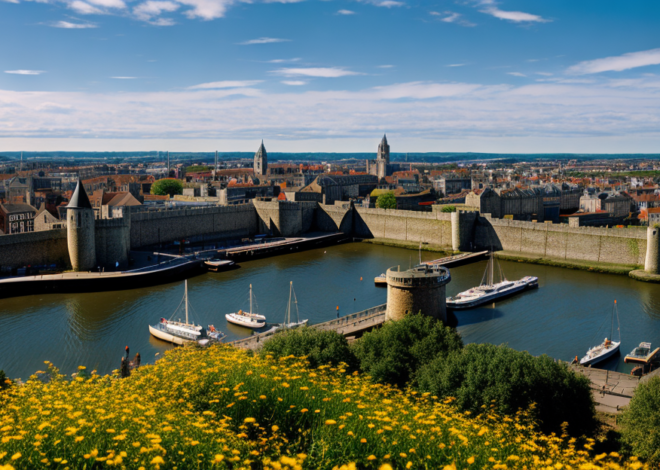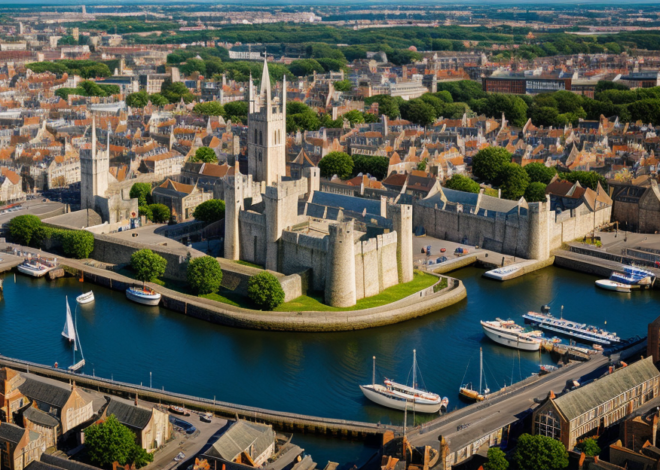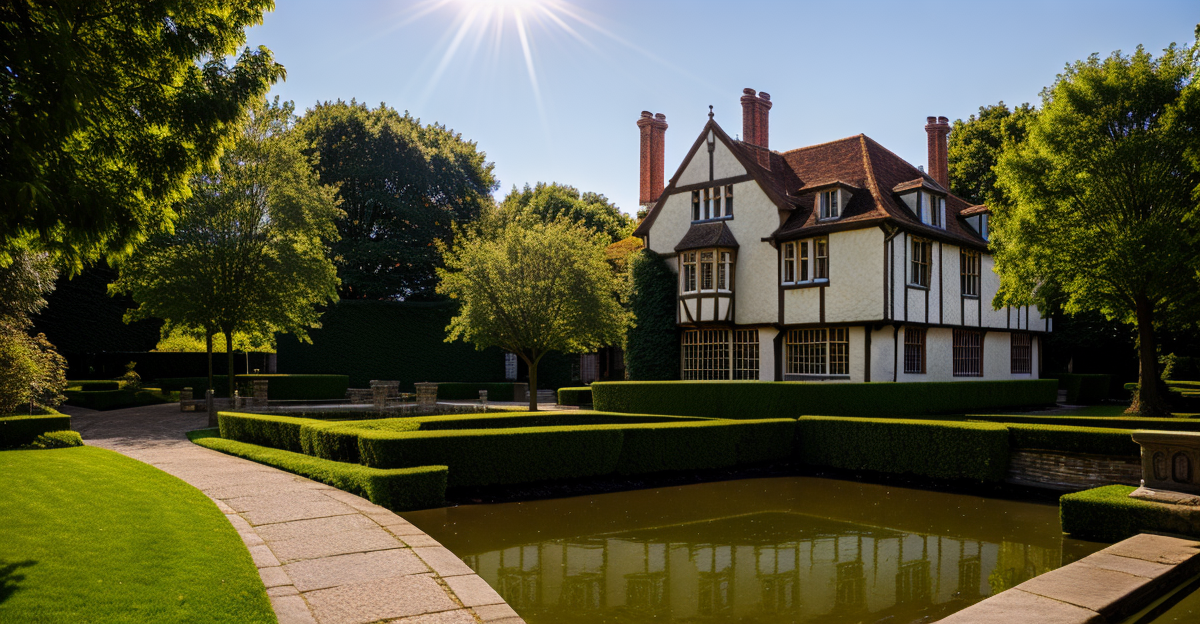
Three Noteworthy Historic Sites in Southampton UK
Southampton, a city steeped in rich history, harbours a collection of significant landmarks that provide a compelling glimpse into its past. Among these, three sites stand distinct, each encapsulating an era that has significantly shaped the city’s identity.
The Bargate Monument and the Medieval Merchant’s House echo the city’s medieval roots, while the Old Town Walls stand as a testament to Southampton’s strategic significance over the centuries.
The exploration of these sites not only affords a deeper understanding of the city’s historical narrative but also poses questions about how these relics of the past continue to influence the present.
Let’s embark on this fascinating journey of discovery to unravel the stories these historic sites hold within their ancient walls.
Southampton’s Medieval Period
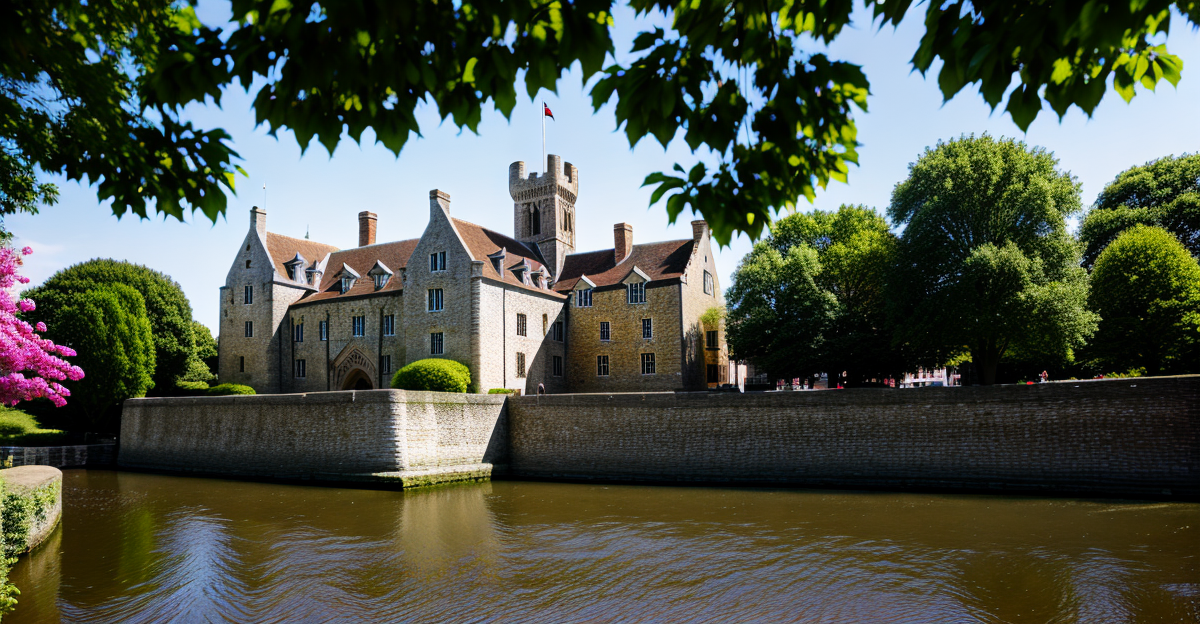
Delving into Southampton’s medieval period, it is immediately evident that this era significantly influenced the city’s historical and architectural landscape, with numerous structures and monuments serving as enduring testaments to its vibrant past.
The medieval architecture of Southampton is a quintessential example of the stylistic tendencies of the period, characterized by the use of sturdy stone materials, intricate detailing, and imposing fortifications.
Notably, the Southampton Castles are emblematic of the city’s medieval heritage. These castles, including the prominent Southampton Castle, are renowned for their strategic locations, formidable structures, and remarkable preservation. Built around 12th century, Southampton Castle served as a crucial defensive structure and a symbol of power. Its remnants, including the Castle Vault and the Castle Watergate, provide invaluable insights into the city’s medieval architectural practices and socio-political climate.
Furthermore, the medieval city walls, another impressive element of Southampton’s medieval architecture, reflect the city’s need for protection during this tumultuous period. These walls, with their distinctively robust and intricate construction, further underscore the significant influence of the medieval period on Southampton’s architectural and historical landscape.
The Bargate Monument
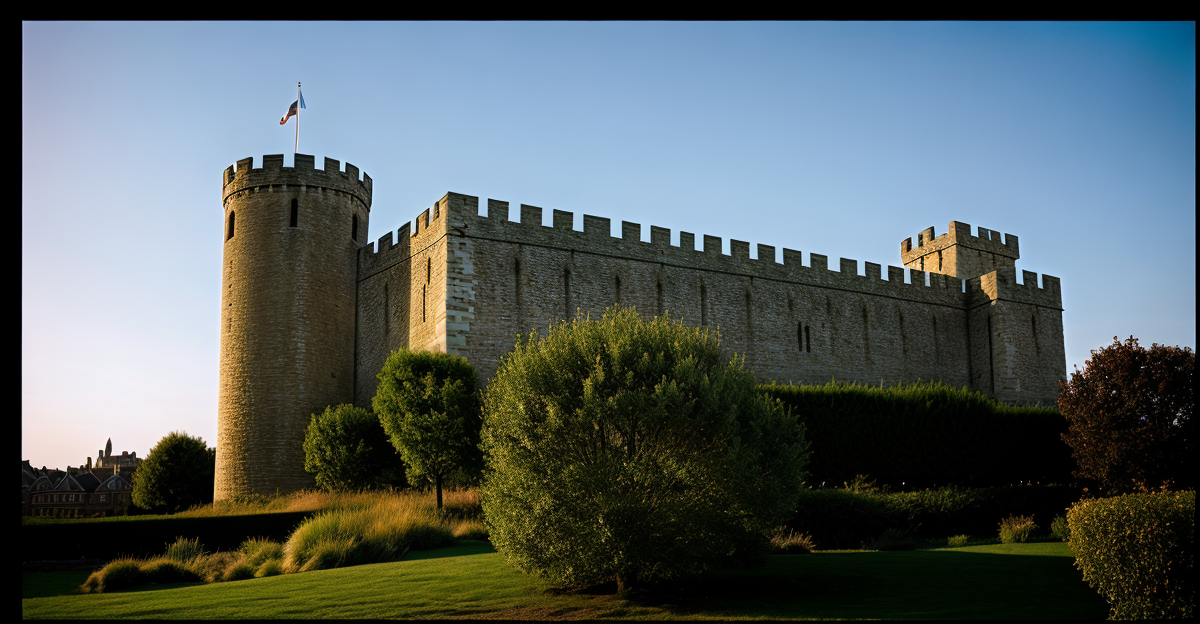
Standing as a prominent testament to Southampton’s rich history, the Bargate Monument is a medieval gatehouse that offers a unique glimpse into the architectural prowess and strategic planning of the era. The structure, built around the 12th century, embodies the essence of Norman architecture. Its symmetrical form, detailed carvings, and sturdy limestone material demonstrate the Bargate’s architecture prowess and its strategic importance as a defensive structure during the medieval period.
Over the centuries, the monument has undergone several modifications, most notably the addition of two polygonal towers in the 13th century, further enhancing its defensibility. These modifications not only showcase the evolution of architectural styles but also highlight the monument’s adaptability to changing times.
Monument preservation has been a crucial aspect of maintaining the Bargate’s historical significance. Despite the wear and tear of time, the monument has been meticulously preserved, with careful attention given to maintain its original features. This commitment to preservation ensures that the monument continues to stand as a symbol of Southampton’s history, allowing future generations to appreciate its grandeur and understand its historical significance.
The Medieval Merchant’s House
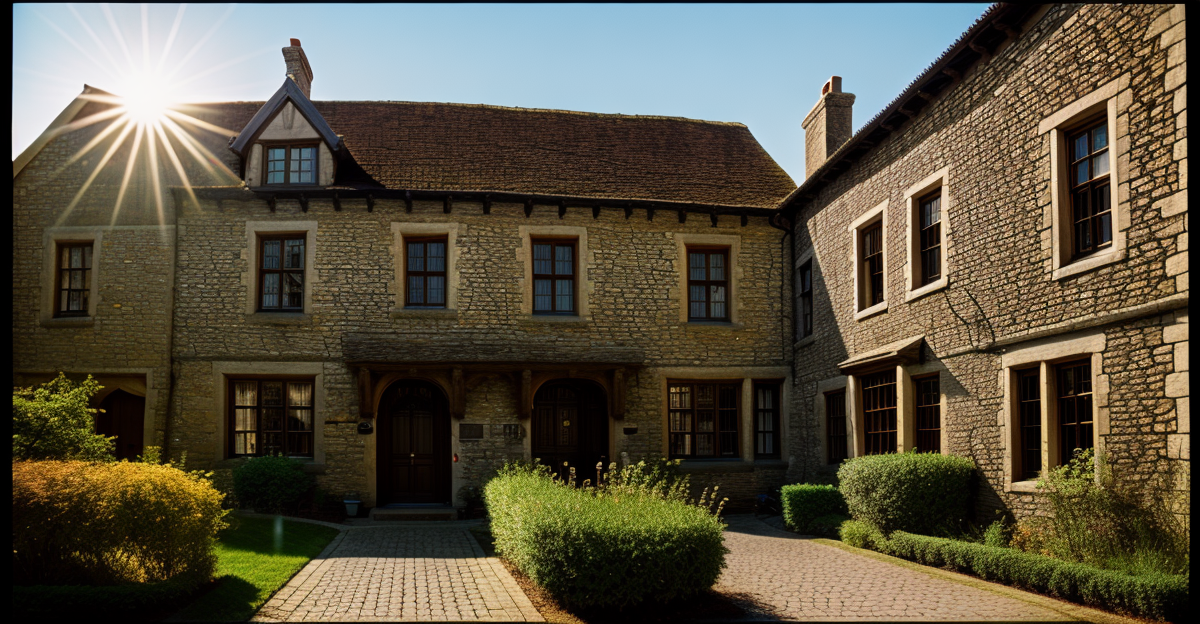
Just a few streets away from the Bargate Monument, another architectural gem warrants exploration – The Medieval Merchant’s House, which offers a fascinating insight into the domestic life of the 14th century. This preserved property, built in 1290, provides a window into the merchant’s lifestyle of that era.
The house, once owned by merchant John Fortin, is a testament to the prosperity brought to Southampton by international trade in the medieval period. The interior, complete with exposed timber frames, period furniture, and distinct medieval features, showcases the wealth and status of its former occupants.
The house preservation effort has been meticulous, with a focus on maintaining its original structure and features. Despite damages from World War II and the passage of time, the house has been carefully restored. Elements such as the medieval-style garden, which grows plants that were common during that age, further help to recreate the living conditions and ambience of the time.
Visiting the Medieval Merchant’s House provides an immersive experience, transporting visitors back to the 14th-century. It is an invaluable educational resource, offering a tangible link to the city’s robust mercantile past. It stands as a remarkable symbol of Southampton’s rich historical tapestry.
The Old Town Walls
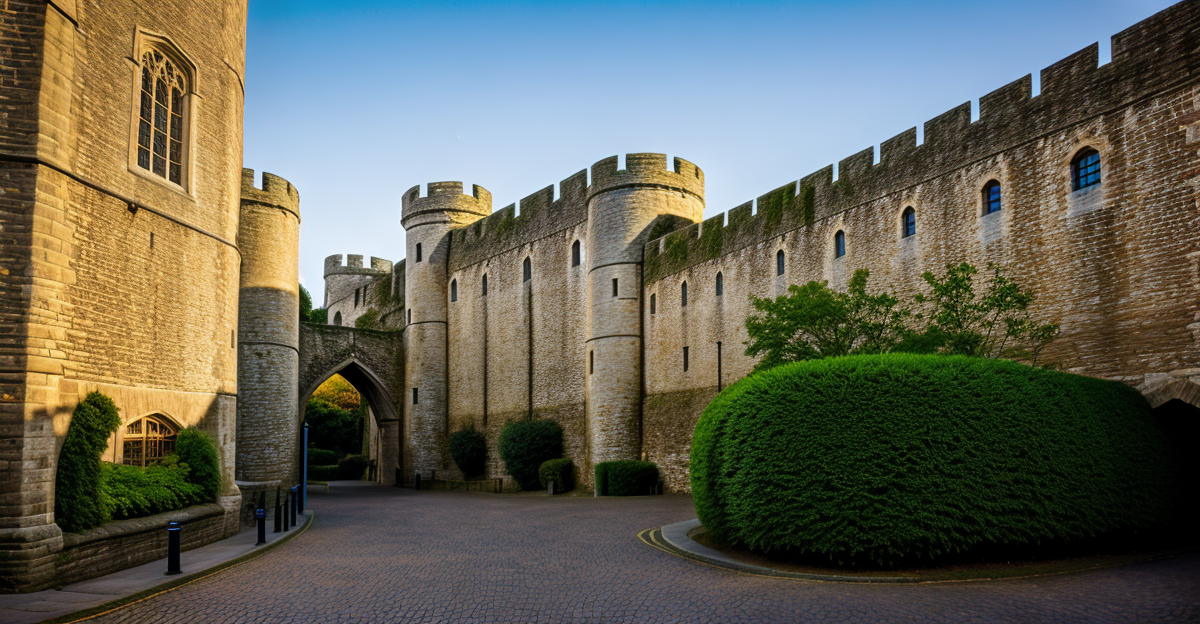
A stone’s throw away from the Medieval Merchant’s House, the Old Town Walls of Southampton present an imposing monument to the city’s rich defensive history. These walls, first erected in the 13th century, bear witness to times of strife and turmoil, having been a crucial stronghold during the French and Spanish invasions.
The Wall Preservation efforts reflect the city’s commitment to safeguarding its historical heritage. Meticulous restoration and maintenance have ensured that the walls, with their Romanesque gatehouses and sturdy towers, continue to captivate visitors and history aficionados alike. The city’s dedication to preserving these monuments is a testament to their historical significance and the shared cultural identity they represent.
The architectural influence of the Old Town Walls is undeniable, shaping the city’s landscape and identity. The walls’ robust yet intricate design displays a combination of strategic military architecture and aesthetic appeal. They stand as a vivid reminder of the city’s medieval past, bridging the gap between history and the contemporary urban environment.
The Old Town Walls, therefore, are not merely relics of the past; they are living symbols of Southampton’s enduring spirit and resilience.
Impact of Medieval Sites Today
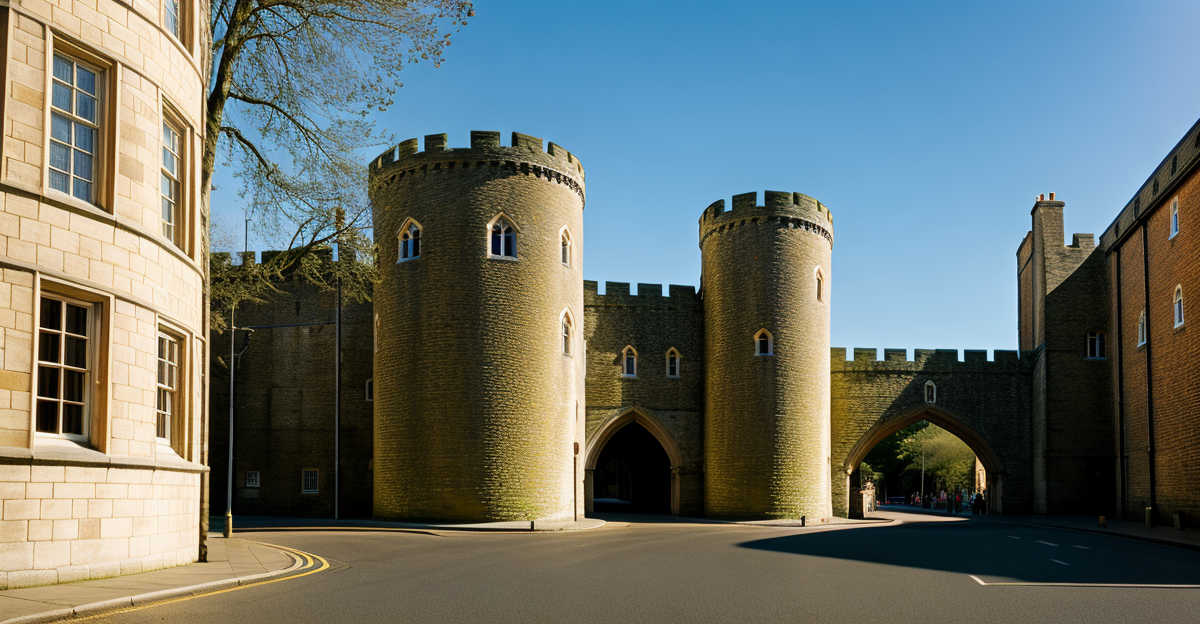
Building upon the enduring significance of structures such as the Old Town Walls, the influence and impact of medieval sites in Southampton continue to resonate in the city’s modern-day cultural, economic, and social spheres.
Medieval architecture influence is palpable in the city’s aesthetics, with numerous buildings and public spaces echoing elements of this age-old design philosophy. This historical influence has lent a distinct character to the city, enhancing its appeal to both residents and tourists.
From an economic perspective, these sites have been instrumental in promoting tourism, contributing significantly to the local economy. They serve as unique attractions, drawing tourists who contribute to the hospitality, retail, and travel industries.
The impact on the social sphere is also significant. These medieval sites have become focal points for community activities, fostering a sense of shared history and identity among residents. They provide a tangible link to the city’s rich past, serving as reminders of its historical trajectory.
Historical preservation efforts have further amplified this impact. By preserving and promoting these medieval sites, city authorities have ensured their continued relevance and influence. These efforts have not only safeguarded the city’s historical heritage but also bolstered its cultural vitality, ensuring that the legacy of these medieval structures continues to inform Southampton’s contemporary identity.

